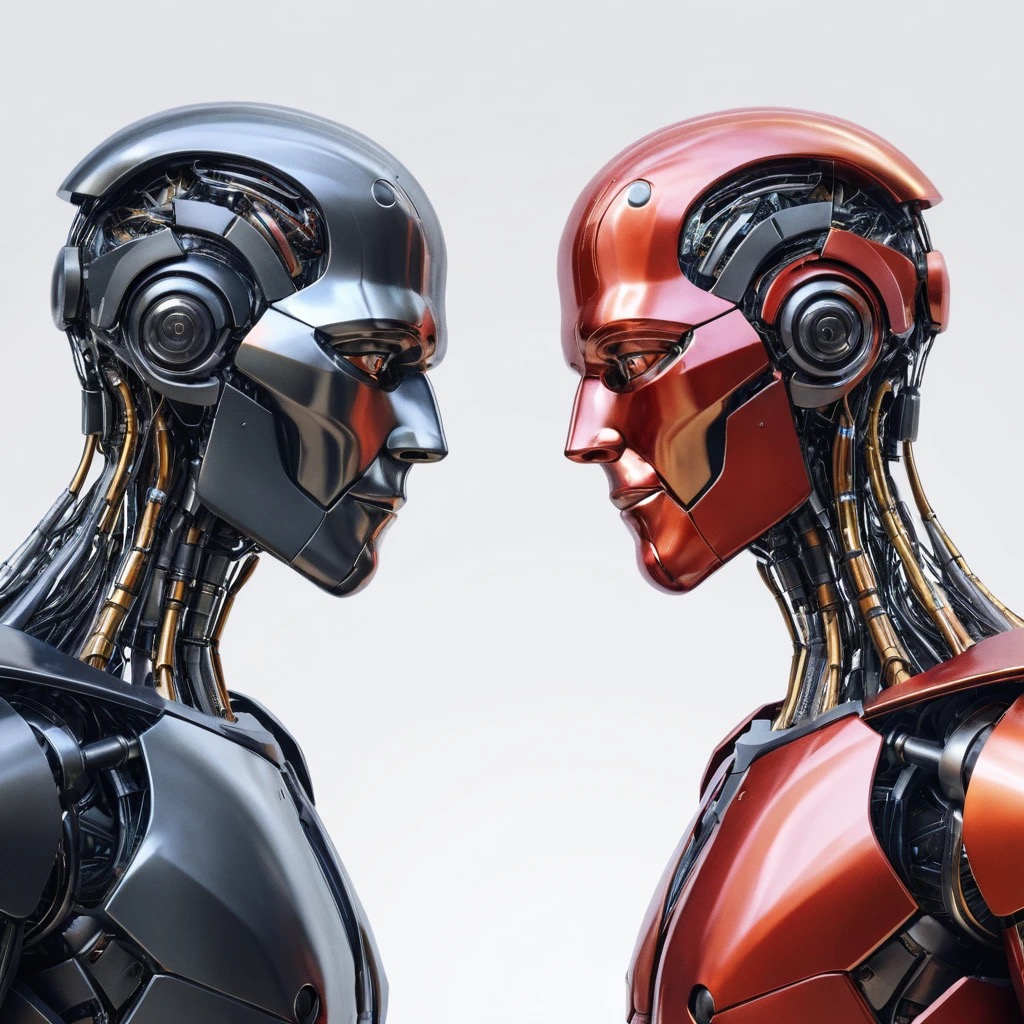Adres
Polska, Warszawa

Introduction
In the world of technology, few rivalries have been as transformative and captivating as the ongoing competition between Google and OpenAI. Both giants have carved a niche in Artificial Intelligence (AI), vying to lead the field with groundbreaking innovations and bold initiatives. This article explores the latest advancements from these industry titans, spanning AI video generation, image enhancements, language modeling, robotics, and more. It delves deeply into the implications of these developments, highlighting how the competition is fostering an era of rapid technological evolution.
Section 1: Google’s Revolutionary AI Video Models
V2 AI Video Model
Google’s V2 AI video model is making waves with its cutting-edge features, setting a benchmark for video generation technologies. The model boasts several groundbreaking capabilities:
1. Unparalleled Realism: The V2 model demonstrates an impressive understanding of physics, human movement, and visual coherence. This realism sets it apart from previous iterations and competing models.
2. Multiple Video Outputs: For every input prompt, the model generates four distinct video variations, giving creators a diverse array of choices.
3. Ease of Access: While currently limited to early access through a waitlist, this model is poised for a broader rollout.
Implications for Content Creation
These features allow filmmakers, marketers, and educators to leverage AI for realistic, high-quality video production. The ability to refine outputs with multiple variations ensures creative freedom and adaptability.
Section 2: Notebook LM – Transforming Document Interaction
Google’s Notebook LM represents a significant leap in AI-driven productivity tools. The platform allows users to upload documents and engage with them in innovative ways, including:
1. Interactive Podcast Creation: Documents or transcripts can be transformed into podcasts. Users can pause, ask questions, and receive real-time responses.
2. Redesigned Interface: A sleeker, more intuitive design improves usability.
3. Dynamic Interactivity: Users can interact with the AI-generated podcast to gain deeper insights into the content.
Use Cases
• Education: Teachers can convert textbooks or lecture notes into engaging podcasts, enhancing accessibility for auditory learners.
• Corporate Training: Companies can transform training manuals into interactive podcasts, streamlining employee onboarding.
Section 3: Gemini Advanced 2.0 – Google’s Latest Language Model
Key Features
Gemini Advanced 2.0 exemplifies Google’s dedication to pushing the boundaries of language modeling. This experimental model introduces:
1. Enhanced Reasoning: The model excels at logical problem-solving and decision-making.
2. Intuitive User Interface: Available through AI Studio, users can experiment with the model’s capabilities in real-time.
3. Competitive Edge: Positioned as a direct rival to OpenAI’s GPT-4 and its upcoming successors.
Applications
The Gemini model can revolutionize industries such as:
• Healthcare: Analyzing complex medical data for diagnostics.
• Legal Services: Summarizing lengthy contracts and identifying key clauses.
Section 4: Innovations in AI Imaging
Google continues to lead in AI imaging with tools that redefine creativity and efficiency.
Image in 3 Model Updates
Recent enhancements to the Image in 3 model include:
1. Better Composition: Images now feature improved balance and layout.
2. Brighter Visuals: Optimized color grading ensures vibrant outputs.
Whisk Tool
The “Whisk” tool introduces new dimensions to creative workflows:
1. Image Blending: Users can merge multiple images into a single, cohesive visual.
2. Style Variability: The tool adapts seamlessly to different artistic styles.
Section 5: Nvidia’s Jetson Nano Mini Supercomputer
Features and Capabilities
The Jetson Nano is a compact powerhouse designed for robotics and AI enthusiasts:
1. High Performance: Capable of 70 trillion operations per second, it supports advanced robotics applications.
2. Affordable Accessibility: Priced at $249, it lowers the entry barrier for developers.
Use Cases
• Robotics: Powering autonomous machines in logistics, healthcare, and agriculture.
• Education: Enabling students and researchers to experiment with high-performance AI tools.
Section 6: OpenAI’s Competitive Moves
OpenAI’s latest updates showcase its relentless pursuit of innovation and user-centric design.
Project Folders in ChatGPT
OpenAI introduced project folders to improve organization:
1. Enhanced Workflow: Users can group prompts and documents by project for streamlined access.
2. Custom Instructions: Each project can have tailored parameters, enabling specialized responses.
Voice Interaction Capabilities
The launch of 1-800-ChatGPT marks a step toward accessible voice-based AI:
1. US-Only Feature: Users can call the service to engage with ChatGPT, although currently restricted to the United States.
2. Advanced Voice Mode: Mimics human conversational patterns for a more natural experience.
Section 7: The Battle for Dominance in AI Video
Both Google and OpenAI have made significant strides in AI video generation, pushing the boundaries of creativity.
Google’s Approach
With tools like V2 AI Video and Whisk, Google emphasizes:
• Realism: Ensuring outputs mirror real-world physics and aesthetics.
• Versatility: Supporting a range of applications, from marketing to education.
OpenAI’s Response
OpenAI’s efforts focus on accessibility and integration:
• Enhanced APIs: Developers now have access to more sophisticated models for video-related tasks.
• User Engagement: Features like real-time questioning enhance interactivity.
Section 8: Broader Implications for Society
Democratization of Technology
Both companies are committed to making AI accessible:
• Google: Affordable tools like the Jetson Nano empower budding innovators.
• OpenAI: Freemium models ensure widespread adoption.
Ethical Considerations
As AI capabilities expand, ethical questions arise:
• Content Ownership: Who owns AI-generated videos or images?
• Privacy: Ensuring user data is protected in interactive systems.
Section 9: Future Trends in AI
Increased Personalization
AI models will become more personalized, catering to individual preferences and needs.
Enhanced Collaboration
Expect more partnerships between tech giants, startups, and academia to drive innovation.
Real-Time AI
Advancements in processing speeds will enable real-time applications, from translations to autonomous driving.
Conclusion
The competition between Google and OpenAI is a boon for innovation, fostering rapid advancements in AI technologies. As they continue to unveil powerful tools, the future of AI promises to be more dynamic, accessible, and transformative than ever before.